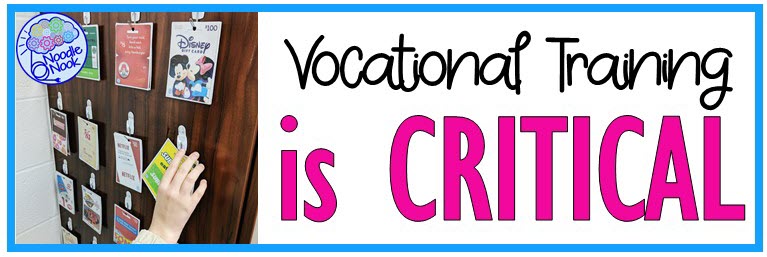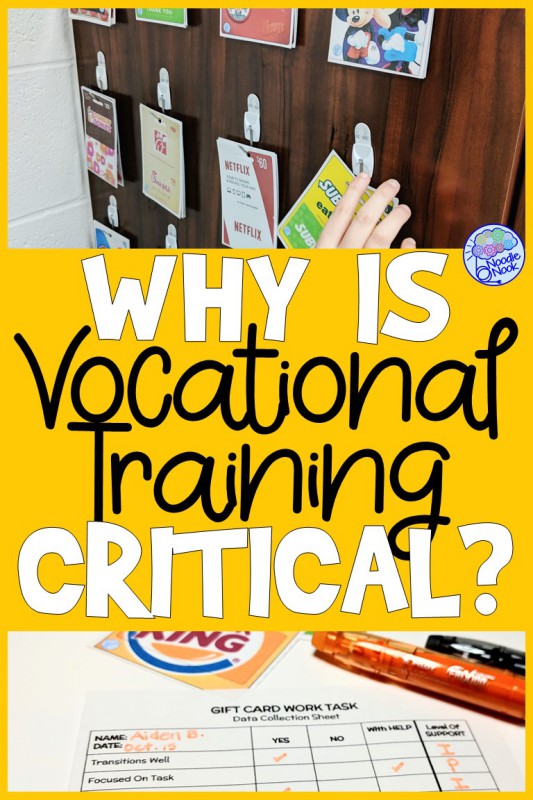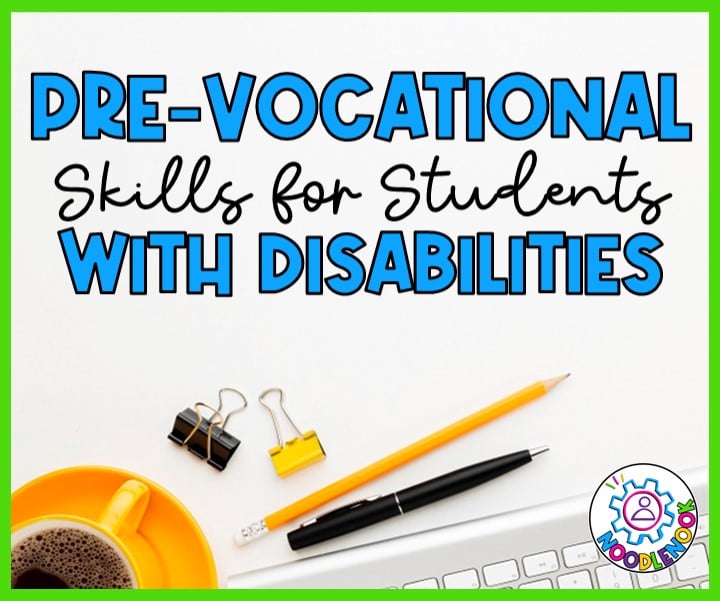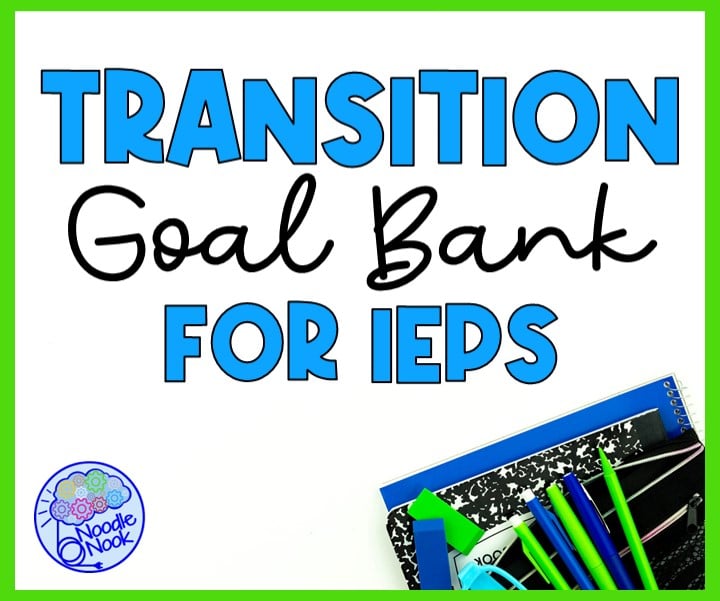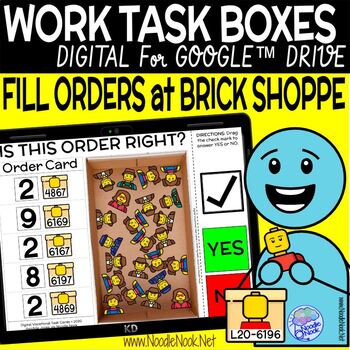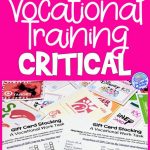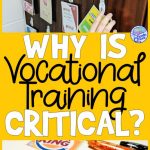I started teaching in elementary. When you’re working with students who are so young, it can be hard to teach any real vocational skills. You don’t even realize that vocational training is critical, even for young students. It wasn’t until years later when I was teaching in high school that I learned why vocational training is critical in special ed.
Unfortunately, when I started coaching teachers at the secondary levels, it didn’t seem to get any easier. Now, instead of age being a hurdle it seemed there was a new obstacle. With all the academic and functional skills to target, vocational training just kinda falls by the wayside.
Vocational training is critical for students with significant disabilities. Here are a few reasons why.
Finding a Job Is Hard…
The job market is always tight. For people with disabilities, the job market is smaller and more difficult to get into. Statistics show that people with disabilities are underemployed and unemployed at a higher rate. What’s worse is people of color with disabilities are even harder hit.
In order to be competitive in the job market, our students need quality vocational training as early as possible and consistently through to graduation. Those skills will help them be more marketable and employable in the postsecondary. Making job readiness skills and activities a priority in your classroom can help students find a job in the post-secondary. With the right support and resources, we can help level the playing field and give them the best chance at success.
That’s why vocational training is critical in special ed… because we can set them up for lifelong success. Or failure. Try to be mindful of incorporating vocational tasks in your classroom. You may decide to set up vocational centers. This is a great space for students to learn the skills they need to be competitive in the job market. By providing early and consistent vocational training, we can give our students the tools they need to succeed, no matter what challenges they may face.
Click here if you want to learn more about setting up vocational centers in the classroom or classroom-based businesses (like a coffee cart). These posts can provide you with more information and resources to help you make a real impact in the lives of our students.
Our Students Have a Longer Learning Curve
Another reason vocational training is critical for students with disabilities is that they take more time to learn and generalize skills. We have all heard the old adage that we are training our students for jobs that haven’t even been imagined yet. That thought makes my heart palpate.
If our students take longer to learn and generalize, how can they be prepared to compete in the global marketplace?
Here are a few examples of skills that students with disabilities can benefit from learning in vocational training:
- Time management and organizational skills
- Communication and teamwork skills
- Problem-solving and critical-thinking skills
- Adaptive technology and assistive devices (read more about assistive tech options here)
- Industry-specific skills and knowledge, depending on the field they are interested in pursuing
- Self-advocacy and self-awareness
- Job readiness and interview skills
- Basic math and financial literacy (check out this financial literacy activity)
- Workplace safety and appropriate work behavior
We have to be thoughtful of what skills we teach. We also have to be consistent so students do learn and generalize these skills.
Good Vocational Training is Hard to Find in The Postsecondary
After our students graduate and leave us, there are very few opportunities for supported job training and vocational skill building. What we teach them from K-12 may be all the quality training they ever get *yikes*.
No pressure, but you need to make what you do great because they may not get any good vocational training after graduation.
That’s why it’s crucial that we make the most of the time we have with our students, and provide them with the highest quality vocational training possible. This may not mean teaching them the specific skills they need to succeed in one chosen job. It does include equipping them with the confidence and self-awareness they need to advocate for themselves in the workplace. And it includes teaching students to be more adaptable and learning flexibility can be huge. Soft skills matter.
It’s also important that we, as teachers, are staying current with the latest industry trends and technology. This is so our students learn the skills they need to succeed today, but, more importantly, the skills they’ll need to thrive in the future. If you’re still teaching check-writing skills, maybe let that one go. Learning tech skills and digital banking may be better.
Yes, all of this is a big responsibility, but it’s one that we can rise to meet. By working together and staying committed to providing our students with the best possible training, we can give them the best chance of success in the job market, and in life.
Supports in Postsecondary Are Harder to Get
Lists for governmental agency support for students with disabilities can be years… literally! Getting vocational training or on-the-job support can be downright impossible. We are here now though, and it is our responsibility to make sure we equip our students to be successful.
Vocational training is critical for students with disabilities, so make sure you are doing all you can to get them off to a great start. Remember, vocational training isn’t a one-time event or one day of helping out in the community. It’s an ongoing process of skill building, generalizing, and adapting skills to meet future job demands.
Recap: Why Vocational Training Is Critical
There are so many more reasons why vocational training is critical for students with disabilities. I seriously could go on and on! The reasons listed here are some of the main ones… and ones that hit my heart heaviest when I think of how I’m setting up vocational training in the classroom.
One of the most important reasons why vocational training is critical for students with disabilities is that it empowers them to take control of their own futures. By providing them with the skills and knowledge they need to succeed in the job market, we are giving them the opportunity to pursue their passions and find fulfilling careers. This not only improves their quality of life but also helps to break down the barriers that can prevent them from independent living.
Another important reason is that vocational training helps to promote inclusion and diversity in the workforce. When individuals with disabilities are given the opportunity to succeed in the job market, it helps to create a more inclusive and equitable society for all.
It’s also worth mentioning that vocational training can help to reduce the financial burden on families and society as a whole. When individuals with disabilities are able to secure paying jobs, they are more likely to be able to support themselves in some capacity, which in turn can help to reduce their need for assistance.
In short, vocational training is a critical tool for empowering students with disabilities to reach their full potential and succeed in the job market. It’s an ongoing process that requires persistence, advocacy, and staying informed about the available resources. It’s an investment in the future not only for the students but also for society as a whole.
Teaching is tough… But so are you. Remember to stay strong and teach on!
If you want to read more, check out these articles.
Do you need quality vocational training activities in your classroom? Check out these practical yet fun and functional activities in my shop:

